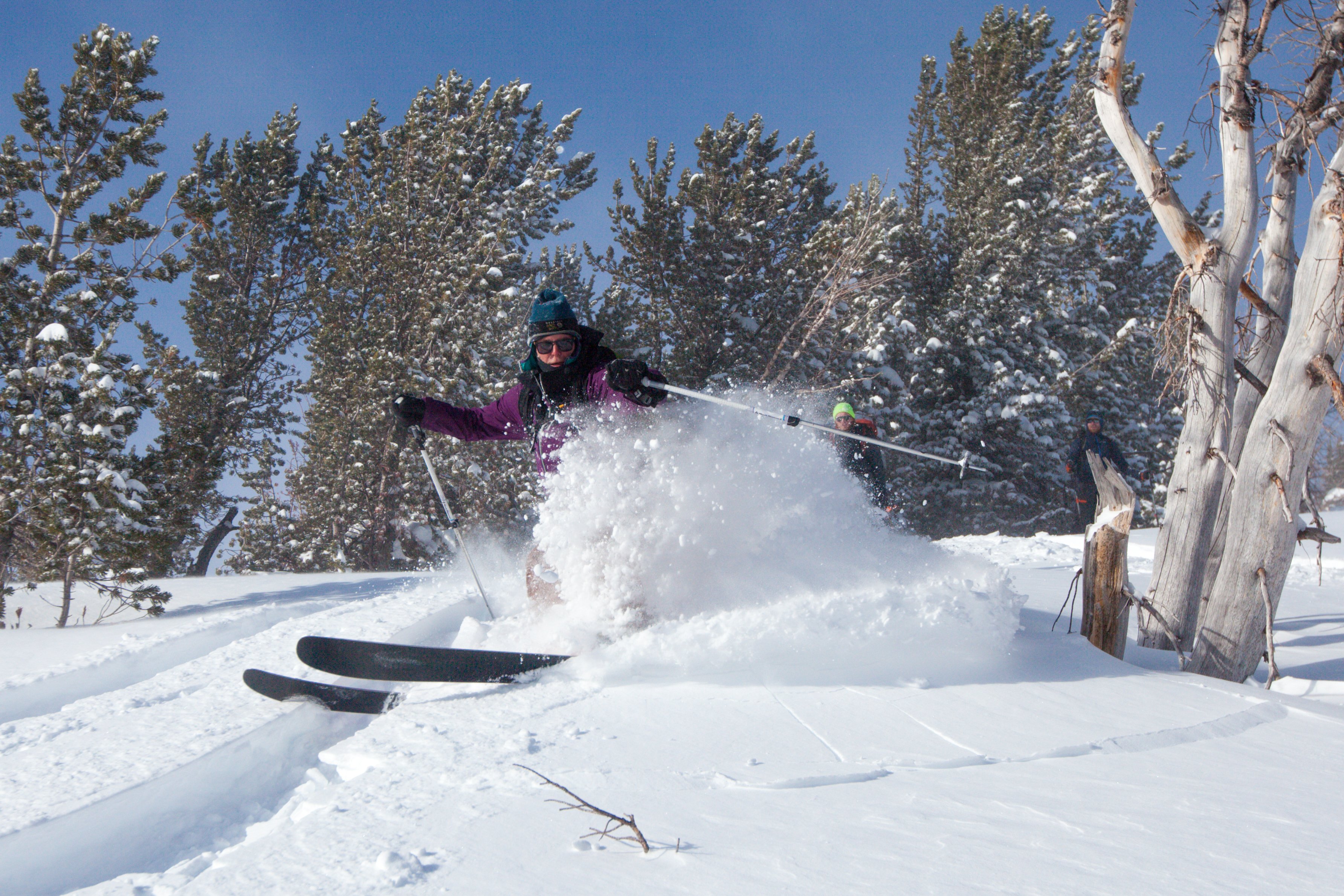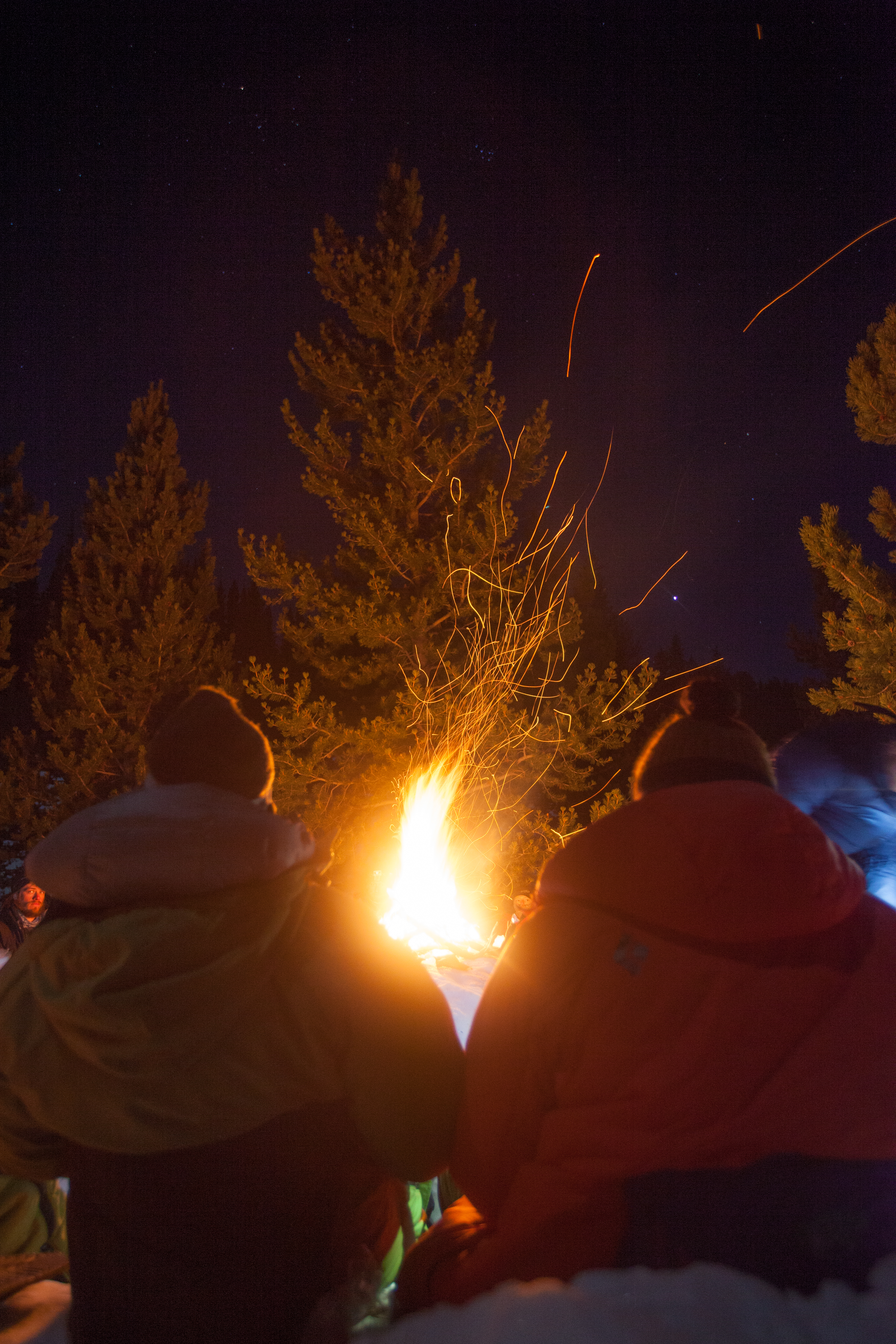
You and three companions are on an afternoon cross country ski of a marked, but ungroomed trail system in the local national forest. The temperature has been hovering in the low teens Fahrenheit, the day made beautiful by a blue sky, the absence of wind, and plenty of fresh snow. You’ve been skiing for several hours and reached your planned turn around point 5K from the trailhead.
“Check this person out!”
A lone skier cuts turns down the steep hillside above the trail. He’s moving smoothly on a course to cut right in front of you until he takes a terrain feature that launches him in the air. His skis go up, his butt goes down, and he lands hard on his back. You’re impressed when he bounces, stands and glides for a few moments. You’re concerned when he sits awkwardly and rolls onto his side.
“Hey, are you okay?”
There is no answer and the skier seems to be moving awkwardly. In less than a minute you ski to his side. The skier is gasping for air. You introduce yourself and ask if you can help. One of your companions takes control of his head and asks, “Can you breathe?” The skier gasps in response. You look at his airway, sweep for obvious injuries and blood, and check for chest injury. All these are negative, which is positive.
Over the next couple of minutes the patient’s breathing calms, but he’s complaining of back pain. You complete a physical exam. You also remove the patient’s pack, check his back, and roll him onto a few short pads you had from your packs. The NOLS Wilderness Medicine water bottle with the patient assessment system (PAS) triangle lying on the snow catches your eye. A quick drink allows you to look surreptitiously at the triangle and organize yourself for the assessment.
SOAP Report
Subjective
The patient is a 30 year old who we witnessed fall hard onto his back while skiing. He may have hit a stump. He stood under his own power, skied a short distance, then collapsed.
Objective
Patient Exam
Patient was found on his right side gasping for air. This was resolved after a few moments and was attributed as “wind knocked out.” At present he has no shortness of breath, no pain when breathing. He has pain across his lower back with tenderness on several lumbar vertebrae. No other injuries were found. He did not lose responsiveness and denied any rib tenderness. At present he has good CSM x 4 but did report a tingling sensation running down his legs for a few minutes after the fall. His feet and hands are warm.
Vital Signs
|
Time |
1500 hrs |
1520 hrs |
|
LOR |
A+O x4 |
A+O x4 |
|
HR |
100, regular, strong |
100, regular, strong |
|
RR |
Gasping, unable to count |
12, regular, easy |
|
SCTM |
Pale, warm, dry |
Pale, warm, dry |
|
Pupils |
Equal, round, reactive to light |
Equal, round, reactive to light |
|
BP |
Radial pulses present |
Radial pulses present |
|
Temp |
Skin is warm |
Skin is warm |
History
|
Symptoms: |
None stated. |
|
Allergies: |
Pollen in summer. |
|
Medications: |
Ibuprofen 400 this morning, no regular medications. |
|
Pertinent Hx: |
Ibuprofen was for aches after skiing yesterday. |
|
Last in/out: |
Patient has had 2 liters of water today, snacking all day. |
|
Events: |
Patient fell while skiing. |
Pause here
Think about your plan before scrolling further.

Assessment
-
Possible spine injury
Plan
- Patient has pain on his spine and is not a candidate for a focused spine assessment.
- Immobilize the patient to the ground.
- Protect the patient from the cold.
- Continue to monitor.
- Confirm coordinates and location with GPS and topo map then send two skiers back on the trail to a ridge where they should have cell phone service and call for assistance.
Anticipated problems
- Hypothermia and frostbite. We have minimal insulating gear and no sleeping bag.
- Shock from an internal injury.
The Tale Continues
Both you and the patient wish he could stand and ski, but you’re worried about the spine and the patient’s back pain worsens over time. The equipment inventory lacks those sleeping bags and plastic sheets you had on your WFR course. You’re able to log roll the patient again and dress him with his down jacket and an extra layer of fleece. You also pull a set of overpants onto him, loosen his boots and change his socks to a dry pair. A spare scarf insulates and serves as a c-collar. Your packs immobilize his head. The rest of you don your spare layers. It’s becoming cold. You’re not moving. The sun is low on the horizon and you’re now in the shade.
The patient reports that he was skiing with a companion who went down the slope before him. As you’re preparing to wait in the cold the friend returns, sweating from an uphill slog, learns what had happened, and volunteers a bunch of candy bars and two heat packs, which you place in the patient’s boots.
You’re all worried about your ability to stay warm. You build a fire, more for emotional comfort than real heat, and use pine boughs and packs to try to separate the patient from the snow.
The patient’s low back pain persists and even worsens, but CSM’s stay intact. A second look at his back reveals a 3” bruise low on his lumbar spine. The heart rate remains higher than normal, which is worrisome, his skin remains pale, warm and dry, he remains A+Ox4 and he has a radial pulse. The patient urinates once, facilitated by log rolling him onto his side and having him pee yellow urine onto the snow. The absence of obvious blood in the urine is heartening. Everyone is shivering occasionally as the sun sets.
End of the Tale
After the eternity of an hour your two companions return. The good news is that they made contact with local SAR, who are responding with snow machines and sleds. The bad news is that it might be another hour before rescue arrives.
It’s a half-hour before the first welcome whine of the snow machines and another half hour before they arrive. Their travel in the ungroomed conditions has been hard. The rescue sled stays while the other snow machines return to the chore of packing the trail. These rescuers are prepared and have sleeping bags, a litter, numerous hot packs and several thermoses of hot drinks. They complement your bivouac, fire, and patient report and appreciate that you can help them package and load the patient onto a sled in the care of an EMT. They head to the trailhead. You gather your gear and begin the weary ski out, suddenly feeling exhausted by your work.
Comments
This is based on an actual event. We pack our packs in the warmth of our homes where it is hard to imagine the reality of 4:00AM on a winter’s night. These WFRs and WFAs did a fine job assessing the patient, protecting his spine, organizing a plan to gain assistance and staying warm. They had enough to get by, but it would have been a long night if the SAR unit had not arrived. The patient had several spine fractures, but no spinal cord injury.
Keep your skills fresh: Recertify with NOLS Wilderness Medicine
Written By
Gates Richards
Gates Richards has been involved in outdoor education and EMS since the early '90s. Over the years he's worked outdoor programming throughout the Rockies, Pacific Northwest and Alaska. He's worked urban EMS in DC, WA, CO and WY. Gates began teaching for NOLS Wilderness Medicine in 1998 and has been awarded the Wilderness Medical Society's Warren Bowman award for contributions to wilderness medicine by a non-physician as well as the National Collegiate EMS Foundation's Distinguished Service Award. He was the former Associate Director and is currently a NOLS Wilderness Medicine Faculty member.




